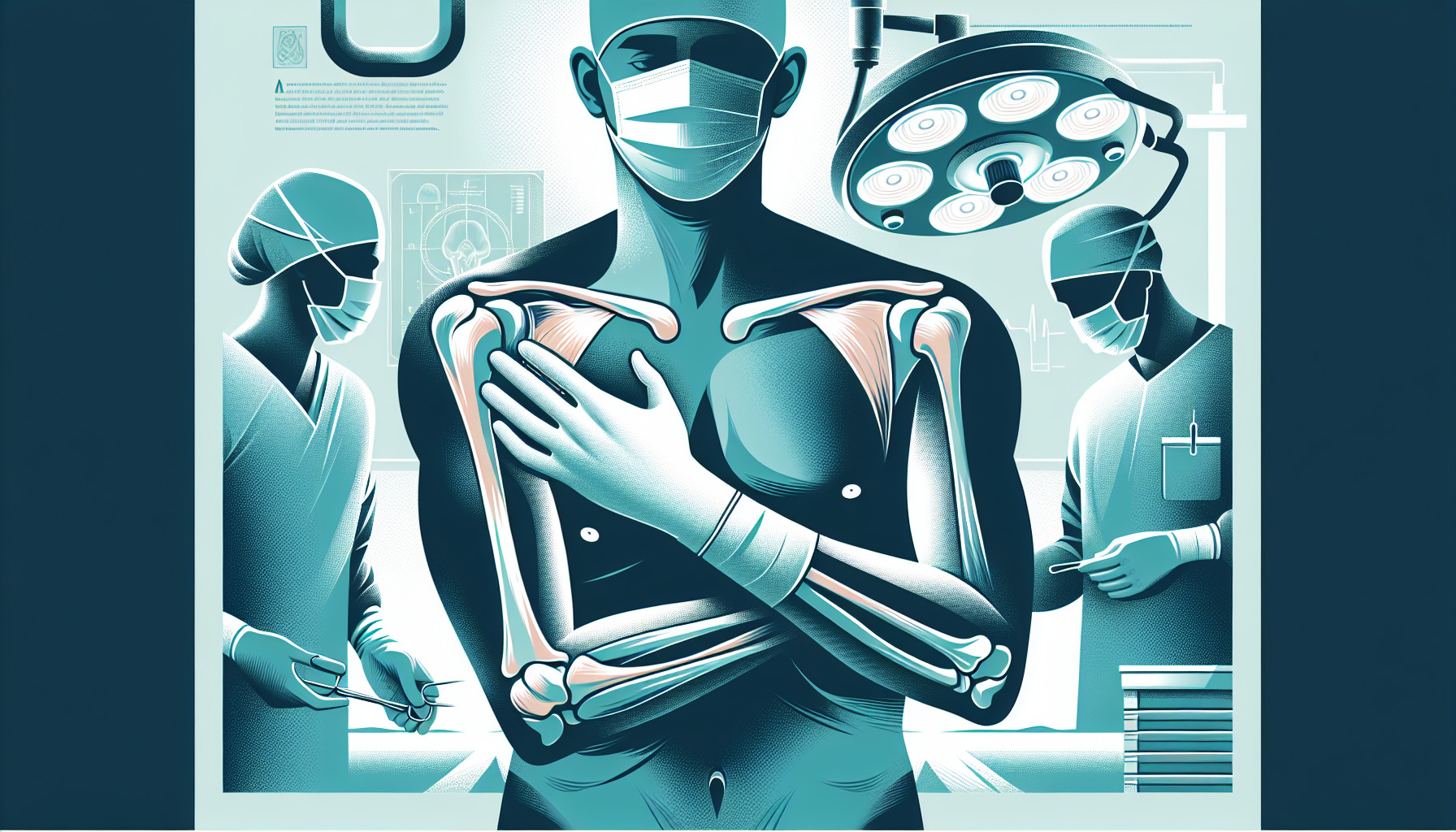Our Summary
This research paper is about a study on a particular type of shoulder injury called an acromial fracture that can occur after a specific type of shoulder replacement surgery known as reverse total shoulder arthroplasty (RTSA). The researchers wanted to understand how often this injury occurs and the effectiveness of different treatments.
The researchers looked at 15 previous studies involving 2,857 shoulders. They found that the acromial fracture occurred in about 4% of the cases. The patients who experienced this fracture were, on average, about 73 years old and the injury was identified about 9.4 months after the surgery.
Most of these fractures (around 88%) were treated conservatively, meaning without surgery, while the rest (about 12%) required surgical treatment. After an average follow-up period of nearly 34 months, half of the fractures had healed. The healing rate was higher for those treated with surgery than those treated conservatively.
The researchers also found that the design of the prosthesis (artificial shoulder joint) used in the surgery affected the likelihood of an acromial fracture occurring.
In terms of patient recovery, on various scales that measure pain and shoulder function, the patients scored relatively well, indicating a good level of recovery.
The researchers concluded that acromial fractures after RTSA are not uncommon and should not be overlooked. However, there’s no consensus on the best treatment approach due to the lack of high-quality studies. Therefore, they suggest more well-designed, long-term studies to better understand how to diagnose, treat, and predict the outcome of these fractures.
FAQs
- How common are acromial fractures after reverse total shoulder arthroplasty (RTSA)?
- What treatments are most commonly used for acromial fractures after RTSA and how effective are they?
- How does the design of the prosthesis used in RTSA affect the likelihood of an acromial fracture?
Doctor’s Tip
A helpful tip a doctor might tell a patient about shoulder replacement is to follow post-operative instructions carefully, including attending physical therapy sessions to regain strength and range of motion. It’s important to communicate any new or worsening symptoms to your healthcare provider to prevent complications such as an acromial fracture. Additionally, staying active and maintaining a healthy lifestyle can help with the overall success of the shoulder replacement surgery.
Suitable For
Patients who are typically recommended for shoulder replacement surgery, including reverse total shoulder arthroplasty (RTSA), are those who have severe shoulder pain and limited function that does not improve with non-surgical treatments such as physical therapy, medications, or injections. Common reasons for shoulder replacement include osteoarthritis, rheumatoid arthritis, rotator cuff tears, severe fractures, or failed previous shoulder surgeries.
Specifically for RTSA, patients who have a rotator cuff tear with severe arthritis, a complex fracture of the shoulder joint, or a previously failed shoulder replacement may be recommended for this type of surgery. RTSA is often recommended for patients who have a combination of rotator cuff dysfunction and arthritis, as it can help compensate for the lack of function of the rotator cuff muscles by using different shoulder muscles to move the arm.
Overall, the decision to recommend shoulder replacement surgery, including RTSA, is based on a thorough evaluation by a healthcare provider, including a physical examination, imaging studies, and a discussion of the patient’s symptoms and goals. Each patient’s individual circumstances and overall health are taken into consideration when determining the most appropriate treatment plan.
Timeline
Overall timeline for a patient before and after shoulder replacement:
- Pre-surgery: Patient experiences shoulder pain, limited range of motion, and decreased quality of life due to shoulder arthritis or injury.
- Surgery: Patient undergoes reverse total shoulder arthroplasty (RTSA) to replace the damaged shoulder joint with an artificial one.
- Post-surgery: Patient may experience initial pain and discomfort, but gradually improves with physical therapy and rehabilitation.
- Acromial fracture: In some cases, patient may experience an acromial fracture about 9.4 months after surgery, affecting around 4% of patients.
- Treatment: Fracture may be treated conservatively or surgically, with a higher healing rate for surgical treatment.
- Recovery: Patient shows good recovery in terms of pain relief and improved shoulder function, as indicated by various assessment scales.
- Follow-up: Patient continues to be monitored for long-term outcomes and potential complications, with the need for more research on optimal treatment approaches.
What to Ask Your Doctor
What is the likelihood of experiencing an acromial fracture after having a reverse total shoulder arthroplasty (RTSA)?
What are the symptoms of an acromial fracture and how is it diagnosed?
What are the different treatment options for an acromial fracture after RTSA?
How does the design of the prosthesis used in the surgery affect the risk of an acromial fracture?
What is the typical recovery process like for patients who experience an acromial fracture after RTSA?
Are there any specific risk factors that may increase the likelihood of experiencing an acromial fracture after RTSA?
What are the potential long-term effects of an acromial fracture on shoulder function and overall quality of life?
Are there any preventative measures that can be taken to reduce the risk of an acromial fracture after RTSA?
Are there any ongoing research studies or clinical trials investigating the best approaches for diagnosing and treating acromial fractures after RTSA?
What are the expected outcomes for patients who experience an acromial fracture after RTSA in terms of pain relief and shoulder function?
Reference
Authors: Cho CH, Jung JW, Na SS, Bae KC, Lee KJ, Kim DH. Journal: Clin Orthop Surg. 2019 Dec;11(4):427-435. doi: 10.4055/cios.2019.11.4.427. Epub 2019 Nov 12. PMID: 31788166
